mardi, 13 décembre 2022
Les "points chauds" de la planète : où pourrait éclater la prochaine guerre?
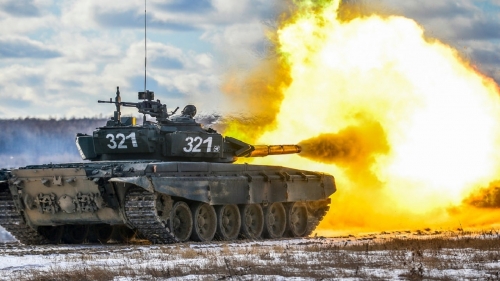
Les "points chauds" de la planète : où pourrait éclater la prochaine guerre?
Andrea Muratore
Source: https://insideover.ilgiornale.it/politica/scioperi-tensioni-ed-esercito-allertato-cosa-succede-davvero-nel-regno-unito.html
Ces dernières années, la guerre du Haut-Karabakh d'abord, puis le violent conflit en Ukraine ont enflammé des scénarios jugés critiques pour l'ordre international par les analystes et les décideurs. Les guerres préventives déclenchées par l'Azerbaïdjan et la Russie contre, respectivement, l'Arménie et l'Ukraine ont montré le retour du recours à la force comme moyen de résoudre les conflits entre États avec une véhémence jamais vue depuis la fin de la guerre froide.
La fin du bipolarisme et l'évanouissement rapide de l'utopie unipolaire du monde dirigé par les États-Unis ont conduit l'ordre mondial à se transformer en un grand désordre international, anarchique et sans règles précises. Cela a alimenté les poussées de tension dans le contexte d'une rupture de plus en plus progressive des freins et contrepoids qui délimitaient l'équilibre des pouvoirs. Le déclin du bipolarisme et les scénarios de guerre hybride et économique qui ont émergé dans divers contextes ont fait le reste, mettant essentiellement en contact les puissances dans diverses régions du monde. Conflits gelés ou de faible intensité sur le point de se réveiller, régions du monde âprement disputées entre puissances, points de contact entre anciens et nouveaux empires revenus s'affronter, zones à revendications politiques multiples : les zones de tension où la prochaine guerre pourrait éclater sont nombreuses.
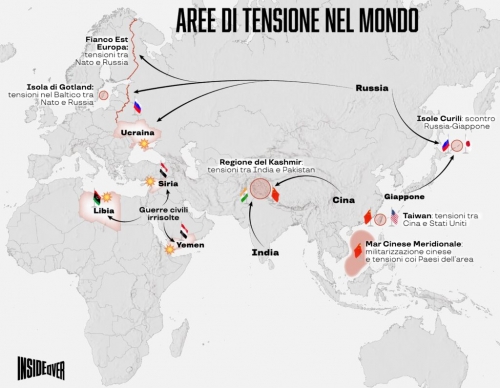
Carte par Alberto Bellotto: les zones de tension dans le monde. Le théâtre finlandais et baltique rapproche la possibilité d'un conflit en Europe centrale et occidentale.
Syrie, Libye, Yémen : trois "bombes" non désamorcées
Le Grand Moyen-Orient et l'Afrique du Nord sont les premières zones à être soigneusement évaluées. Celle de Syrie, dont il a été question récemment dans ces colonnes, est la plus violente des guerres gelées sans issue définitive, même si formellement personne ne met plus en péril le maintien au pouvoir du régime alaouite de Bachar el-Assad. Le pays peine à retrouver son unité, et la reprise des opérations turques contre les Kurdes du Rojava nous a récemment rappelé à quel point ce pays tourmenté du Moyen-Orient présente définitivement des problèmes de stabilité.
Outre la Syrie, le Yémen et la Libye sont aussi des pays déchirés par leurs propres guerres civiles dont la priorité est aujourd'hui de sortir du bourbier qui les voit comme des zones de conflits et de guerres par procuration entre des mosaïques hétéroclites de puissances. Bien que n'étant pas à l'ordre du jour des conflits directs entre États, ces trois nations correspondent à autant de "trous noirs" géopolitiques et stratégiques, sources de tensions pour l'ordre international, à l'instar d'une autre zone souvent sous-estimée, le Sahel.
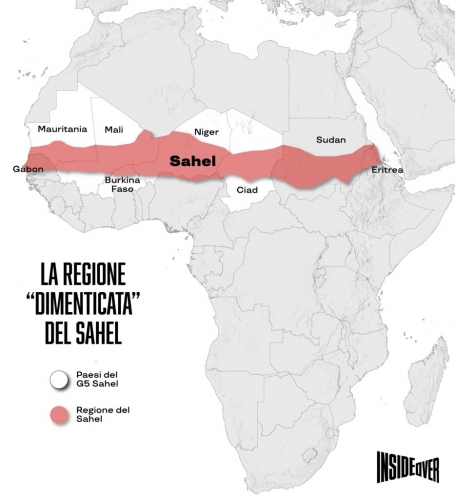
Carte par Alberto Bellotto. Erratum: à la place du mot "Gabon", il faut évidemment écrire "Sénégal".
Etats-Unis et Chine, le front du Pacifique
Bien entendu, les "trous noirs" peuvent être problématiques pour les litiges liés à d'éventuels effondrements d'États ou à l'infiltration de terroristes dans des pays à l'institutionnalisation réduite. Mais le vrai problème, aujourd'hui, reste les points de contact possibles entre les grandes puissances. Des espaces où le risque de confrontation entre blocs de pouvoir est direct.
La première pensée qui vient à l'esprit est évidemment la mer de Chine méridionale et le bras de fer entre la Chine et les États-Unis. Ces derniers mois, les exercices navals de Pékin dans le détroit de Taïwan et la visite de la présidente de la Chambre des représentants de Washington, Nancy Pelosi, sur l'île considérée comme une "province rebelle" par Pékin ont marqué les tensions et la rivalité politique entre les deux géants.
Depuis le début de l'année 2022, la Chine a complètement militarisé avec ses propres forces trois des nombreuses îles qu'elle a construites dans la mer de Chine méridionale contestée, les armant de systèmes de missiles de différents types, en premier lieu l'anti-navire Donfeng-21. Le Guardian rappelle que lors de l'effort décisif de la Chine en mars pour "armer" ses territoires artificiels, "le commandant américain pour l'Indo-Pacifique, l'amiral John C. Aquilino, a déclaré que les actions hostiles contrastaient fortement avec les assurances antérieures du président chinois Xi Jinping selon lesquelles Pékin ne transformerait pas les îles artificielles dans les eaux contestées en bases militaires".
Dans les îles Spratley, disputées avec plusieurs autres nations de la région, en premier lieu les Philippines et le Vietnam, la Chine utilise des bateaux de pêche comme élément de projection. En moyenne, ils jettent l'ancre dans l'archipel contesté de l'Indo-Pacifique pendant au moins neuf mois de l'année.
Washington répond par un système complexe de présence navale. Le commandement du Pacifique, qui gère également les opérations dans l'océan Indien, dispose de deux flottes, la troisième et la septième, avec les porte-avions Nimitz, Carl Vinson, Ronald Reagan et Theodore Roosevelt déployés à San Diego et l'Abraham Lincoln à Yokosuka, au Japon. En plus de Taïwan, armée jusqu'aux dents pour se défendre, Washington compte évidemment sur le Japon, le Vietnam, qu'ils ont redécouvert, et la base aérienne et navale de Guam pour contenir la Chine.

Carte par Alberto Bellotto
Cachemire et Kouriles, terres contestées
Toujours en Asie, il existe des contextes dans lesquels les différends territoriaux jouent le rôle principal et peuvent élever la barre de la confrontation entre puissances. L'agression de la Russie contre l'Ukraine et la mort tragique de Shinzo Abe, par exemple, ont rallumé les projecteurs sur la revendication du Japon concernant les îles Kouriles "arrachées" à Tokyo par l'Union soviétique après la brève guerre de Moscou contre l'Empire japonais en août 1945.
L'assassinat d'Abe a privé le Japon du seul homme d'État qui avait tenté une stratégie diplomatique pour s'approcher progressivement d'un règlement de la question avec la Russie. Le regain de tensions de ces derniers mois ajoute une zone de tension en Extrême-Orient.
La situation au Cachemire, disputé entre l'Inde et le Pakistan, dont New Delhi contrôle une partie importante, est encore plus problématique. L'Inde et le Pakistan ont tenté à plusieurs reprises d'entamer des dialogues pour résoudre le statut contesté de la région, qui fait l'objet de discussions depuis 1947, et se sont affrontés à quatre reprises dans le passé (1948, 1965, 1971 et 1998). Le véritable épicentre d'un conflit potentiellement dévastateur à l'échelle mondiale se trouve ici, où la tension est toujours à son comble entre deux puissances nucléaires.
La Baltique : la nouvelle "mer chaude"
L'Europe n'est pas exempte de la présence de tels "points chauds", et après le tournant du 24 février 2022, jour de l'invasion de l'Ukraine, le nouveau "lac" atlantique, la mer Baltique, est devenu le point de confrontation le plus critique entre le camp euro-atlantique et la Fédération de Russie.
La Baltique est la région où se trouve la ligne d'expansion de l'OTAN, destinée à s'étendre à la Suède et à la Finlande dans les années à venir. Elle est affectée par la présence ostensible de la Russie à Kaliningrad et dans la région de Saint-Pétersbourg, qui est lourdement dotée en personnel. Elle dispose de la plus grande flotte russe de la région et des forces armées des pays européens les plus hostiles à Moscou : l'Estonie, la Lettonie, la Lituanie et surtout la Pologne. Elle est centrale pour les infrastructures énergétiques: le cas du Nord Stream endommagé, dans cette perspective, l'enseigne.
Et justement, la Baltique pourrait être l'épicentre des tensions dans les années à venir. Un pivot européen d'un grand désordre mondial dans lequel les petites et moyennes turbulences se doublent de grands défis. Et qui pourrait semer les graines de nouveaux conflits dans les années à venir.
Donnez-nous une autre minute de votre temps !
Si vous avez aimé l'article que vous venez de lire, demandez-vous : si je ne l'avais pas lu ici, l'aurais-je lu ailleurs ? S'il n'y avait pas InsideOver, combien de guerres oubliées par les médias le resteraient ? Combien de réflexions sur le monde qui vous entoure ne seriez-vous pas capable de faire ? Nous travaillons chaque jour pour vous fournir des reportages de qualité et des rapports approfondis totalement gratuits. Mais le type de journalisme que nous faisons est tout sauf "bon marché". Si vous pensez que nous valons la peine d'être encouragés et soutenus, faites-le maintenant.
19:44 Publié dans Actualité, Affaires européennes, Géopolitique | Lien permanent | Commentaires (0) | Tags : politique internationale, zones de turbulences, gépolitique, conflits, conflictualité, actualité, europe, asie, afrique, affaires africaines, affaires asiatiques, affaires européennes |  |
|  del.icio.us |
del.icio.us |  |
|  Digg |
Digg | ![]() Facebook
Facebook
samedi, 26 janvier 2013
Iran in the strategic plans of the U.S.
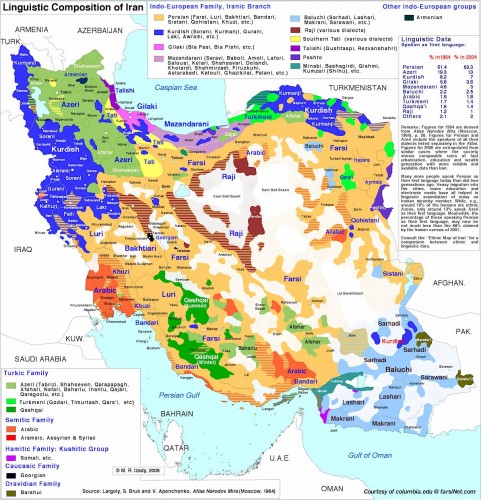
Iran in the strategic plans of the U.S.
The Iranian issue, which had been pushed aside under the shadow of the U.S. presidential campaign, has once again come to the forefront. On November 30th, U.S. Secretary of State Hillary Clinton stated that «the U.S. administration is open to bilateral talks with Iran if Tehran will show a similar willingness to do so» (1).
Clinton explained this «openness» of America to its strategic adversary in that «the behavior of Iran is already a threat that will grow exponentially if it has nuclear weapons at its disposal «(2). It is therefore clear: the United States is ready for any action against Iran, before they have the protection of a nuclear umbrella. The problem for Washington is not only the Iranian nuclear program but the worldview of the Iranian leadership, against whom they use the theme of the fight for the non-proliferation of nuclear weapons.
Let's listen to what Henry Kissinger says in this regard, as he is a person belonging to a narrow circle of people who make decisions, not like Clinton, who just brings them before the public.
One would say about Kissinger that «he smells of power». Kissinger «sharply raised the value and prestige of the National Security Council in the years when America was in decline - in the 1970`s» (3).He was the only senior advisor of U.S. President Richard Nixon's foreign policy (1969-1974) and the most important person in the White House (4). As William Isaacson wrote about him, «Kissinger in the 1970`s played a huge role in creating global peace and in the victory over communism»(5). He is a protégé of the Rockefellers, a member of the Bilderberg Club and Nobel Peace Prize winner (1973) for his role in the achievement of the Paris Agreement on Ending the War and Restoring Peace in Vietnam, the initiator and organizer of detente in relations with the USSR and the policy of cooperation with China, an intellectual and a brilliant analyst, Henry Kissinger always knows what he is talking about.
On November 17 The Washington Post published an article by Henry Kissinger « Iran must be President Obama’s immediate priority», in which, among the most important challenges facing the U.S. president and the one most demanding an urgent solution, he specified stopping Iran's nuclear program… (6).
The starting point for the motivation of the United States to come to a «settlement» with Iran was the Israeli position, which according to Netanyahu, is ready to establish a «red line» that Iran should not cross «in its pursuit of nuclear weapons»(7). In response to Israel's intent to hold to such a «red line», Kissinger made it clear that it is the prerogative of the United States and nobody else (to call a spade a spade, it is the prerogative of the Jewish lobby in the U.S.). The determination of what should be meant by the expression» it is unacceptable for Iran to gain access to nuclear weapons», must be issued by Washington, and only there can the proverbial «red line» be made (8).
Kissinger assures his readers that the talks with Iran on a «5 +1» basis (the permanent members of the UN Security Council - Russia, the U.S., Britain, China, France and Germany) are futile, hopeless and create the conditions for the growth of Iranian nuclear capabilities. If we do not stop Iran's nuclear program now, says Kissinger, then «the result will be a substantial increase in the uncontrolled proliferation of nuclear weapons in the region», in the already incandescent «Arab spring»(9). From these words can be seen another meaning for the «twitter revolutions» in the Middle East: the U.S. first heated up the region(10), to solve the problem of «non-proliferation» of a non-existent nuclear-armed Iran in a situation of high conflict.
In an interview on October 6, 2012, Kissinger said that the main problem for the new U.S. president is the internal state of the country, which is experiencing social and economic crisis (11). The future of America depends on solving this major problem. And history shows that the U.S. often prefers to resolve its domestic problems by the use of foreign policy tools, ranging from two world wars and ending in Libya. Now it is Iran`s turn.
Obama must once and for all solve the Iranian nuclear issue, said Kissinger. «The time available for a diplomatic outcome shrinks in direct proportion as the Iranian enrichment capacity grows and a military nuclear capacity approaches. The diplomatic process must therefore be brought to a point of decision. The P5+1 or the United States unilaterally must put forward a precise program to curtail Iranian enrichment with specific time limits. «(12).
«We cannot afford another strategic disaster», insists Kissinger, referring to the mystifying problem of the «the apocalyptic strain in the Iranian theocracy». To enhance the effect, he talks about his almost absolute certainty, «the near-certainty that several regional powers will go nuclear if Iran does», which allegedly will increase the likelihood of a nuclear exchange.
That is why the U.S. must «insist on limiting Iran's enrichment activities, by aiming to cut Tehran`s access to raw materials for nuclear weapons». Kissinger says that «the higher the level of enrichment, the less time will be needed to create weapons-grade nuclear material. Conventional wisdom holds that the highest practically enforceable limit is 5 percent enrichment, and then only if all fissile material beyond an agreed amount is safeguarded outside Iran» (I leave out the question of who formulates this 'conventional' view. - EP).
At the same time, the old diplomat leaves a loophole for maneuver. As he said before, «This does not imply a red line authorizing any country to go to war. However respectfully the views of friends are considered, the ultimate decision over peace or war must remain in the hands of the president,» emphasizes Kissinger. And as to the question, why bilateral talks with Iran are needed, Kissinger answers with all sincerity: Diplomacy may reach an acceptable agreed outcome. Or its failure will mobilize the American people and the world (in the war against Iran. – E.P). It will clarify either the causes of an escalating crisis, up to the level of military pressure, or ultimate acquiescence in an Iranian nuclear program. Either outcome will require a willingness to see it through to its ultimate implications».
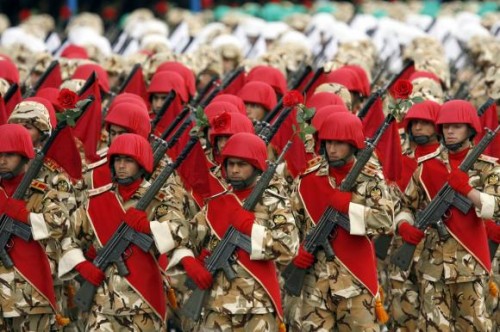
Kissinger`s logic is: «... To the extent that Iran shows willingness to conduct itself as a nation-state, rather than a revolutionary religious cause, (i.e. to fulfill all U.S. conditions and give up its sovereignty. – E.P) and accepts enforceable verification, elements of Iranian security concerns should be taken seriously, including gradual easing of sanctions as strict limits on enrichment are implemented and enforced. But time will be urgent. Tehran must be made to understand that the alternative to an agreement is not simply a further period of negotiation and that using negotiations to gain time will have grave consequences. (my italics. – E.P). “What is this if not the threat of war?» A creative diplomacy, allied to a determined strategy (i.e. the threat of military action? – E.P), may still be able to prevent a crisis provided the United States plays a decisive role in defining permissible outcomes».
* * *
According to the latest report of the Director General of the IAEA, Iran has 16 nuclear facilities. Among them are the particularly important uranium enrichment plants at Natanz and Fordow. In addition, there is an experimental plant in which uranium is enriched up to 19.8% (13). By the way, this is still low-enriched uranium.
The Iranian leaders have repeatedly stated that the increase in up to 5% enriched uranium-235 is due to the need to produce nuclear fuel for light water reactors and that enriched up to 20% is for research reactors. However, now there is only one energy reactor in Bushehr, for which Russia undertook to supply nuclear fuel during its lifetime. Plans for the construction of both power and research reactors have not been implemented. Moreover, under the influence of severe financial and economic sanctions imposed by the EU, the U.S. and others, Iran was forced to propose a plan for a phased suspension of uranium enrichment up to 20% in exchange for the easing of sanctions. In particular, Iran agreed to suspend activity at the uranium enrichment plant at Fordow (14) .However; this has not been the understanding in Washington or Brussels. In contrast, Washington, having achieved concessions began to prepare the field for a tightening of sanctions against Iran and forced Iran to more concessions. Such tactics of the White House, among other things, are designed to put an end to the Russian-proposed principles for the settlement of the situation regarding the Iranian nuclear program – mutual reciprocity.
It is worth mentioning one more statement, this from Clinton. During a speech on November 29, 2012 at the Brookings Institution (Washington), she said: “We’ve made progress with Moscow on areas such as nuclear arms reduction, sanctions on Iran, and trade, and we seek to expand our areas of cooperation. But the reality is that we have serious and continuing differences on Syria, missile defense, NATO enlargement, human rights, and other issues. It will be up to us and our European partners to continue looking for opportunities to engage with Russia and to make progress on the issues that matter to us». (15).Now one of the major issues of importance to the U.S., is Iran. Here, to expect that Russia could agree to what the Americans want is unlikely. The plan for «bilateral talks» with Iran and the presence of Russian pressure on Iran is not working.
In response to growing pressure from the United States, Iran can stop IAEA inspections on its territory, withdraw from the NPT, and even make a decision to conduct a nuclear test. Washington would be unable not to intervene in this situation. Thus, the U.S. is deliberately provoking and stirring up the situation on everything around Iran. On the one hand – there is the offer of bilateral talks (eliminating other negotiators) and on the other - to provoke harsh measures from Tehran that would justify a «response», including military action.
Kissinger's article «Iran must be President Obama’s immediate priority».
Some have argued that even in the worst-case scenario, a nuclear Iran could be deterred. Yet this ignores the immensely costly, complex and tension-ridden realities of Cold War-era deterrence, the apocalyptic strain in the Iranian theocracy and the near-certainty that several regional powers will go nuclear if Iran does. Once nuclear balances are forged in conditions where tensions are no longer purely bilateral, as in the Cold War, and in still-developing countries whose technology to prevent accidents is rudimentary, the likelihood of some nuclear exchange will mount dramatically.
This is why the United States has insisted on limits on Iranian enrichment — that is, curtailing access to a weapon’s precursor elements. Abandoning the original demand to ban all enrichment, the P5+1 has explored what levels of production of fissile material are compatible with the peaceful uses authorized by the Non-Proliferation Treaty. The higher the level of enrichment, the shorter the time needed to bring about militarily applicable results. Conventional wisdom holds that the highest practically enforceable limit is 5 percent enrichment, and then only if all fissile material beyond an agreed amount is safeguarded outside Iran.
I remember a phrase by Chancellor of the Austrian Empire Klemens von Metternich, who can be likened to Kissinger. «Because I know what I want and what others are capable of, I am fully prepared». (16)
Kissinger, and those whom he directs, know what they want. However, do they flatter themselves that they know what others are capable of?
________________________________________
(1) Hillary Clinton: U.S. ready for bilateral talks with Iran. URL: http://www.itar-tass.com/c12/586576.html
(2) As above.
(3) D. Rothkopf Running the World. The Inside Story of the National Security Council and the Architects of American Power. N.Y.: Public Affairs, 2005. P. 126.
(4) H. Smith: The Power Game. How Washington Works. L.: Collins, 1988. P.568, 598.
(5) W. Isaacson Kissinger: A Biography. N.Y. etc.: Touchstone Books, 1992. P. 767.
(6) H. Kissinger Iran must be President Obama's immediate priority. URL: http://www.washingtonpost.com/opinions/henry-kissinger-iran-must-be-president-obamas-immediate-priority/2012/11/16/2edf93e4-2dea-11e2-beb2-4b4cf5087636_story.html
(7) Netanyahu will determine to the UN General Assembly the «red lines» for Iran. URL: http://www.rosbalt.ru/main/2012/09/25/1038402.html
(8) H. Kissinger: Iran must be President Obama's immediate priority ...
(9) As above.
(10) Details from Elena Ponomareva: Secrets of the «color revolutions». In Part III. 2012. № 1-6. URL: http://svom.info/authors/elena-ponomareva/
(11) Henry Kissinger - Extended. URL: http://www.washingtonpost.com/video/thefold/henry-kissinger---extended/2012/10/05/fa5ea71c-0f3b-11e2-bd1a-b868e65d57eb_video.html
(12), Iran should become an immediate priority for Obama. URL: http://www.inosmi.ru/world/20121119/202345548.html/. Further references are given in this article.
(13) V.V. Evseev: The Iranian nuclear programme in a Middle Eastern perspective / / New Eastern Outlook. 10/12/2012. URL: http://www.ru.journal-neo.com/node/119230.
(14) As above.
(15) Clinton has found a «challenge» for Europe. URL: http://www.rg.ru/2012/11/30/clinton-site.html
(16) M. Kalb, B Kalb. Kissinger. New York: Bell Books, 1975. P. 628.
Source: Strategic Culture Foundation
00:05 Publié dans Actualité, Géopolitique | Lien permanent | Commentaires (1) | Tags : iran, états-unis, politrique internationale, gépolitique, asie, affaires asiatiques, moyen orient, golfe persique, géostratégie |  |
|  del.icio.us |
del.icio.us |  |
|  Digg |
Digg | ![]() Facebook
Facebook


